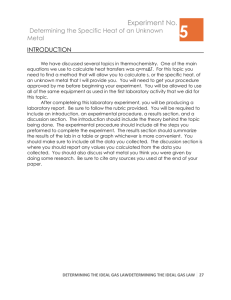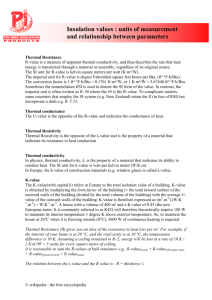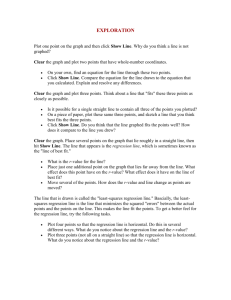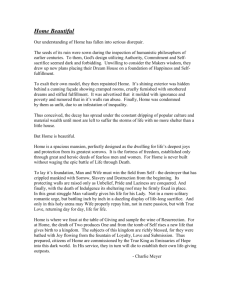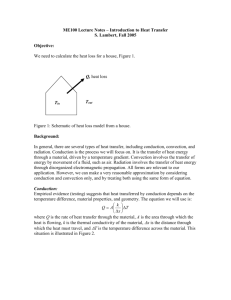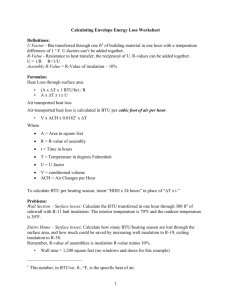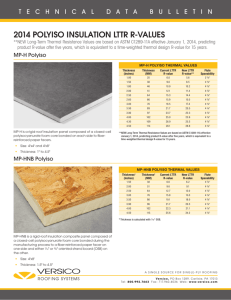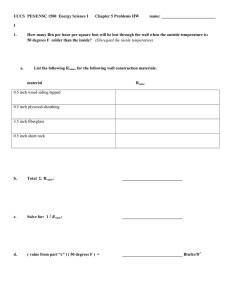Transcript - Dutton e-Education Institute Courseware
advertisement
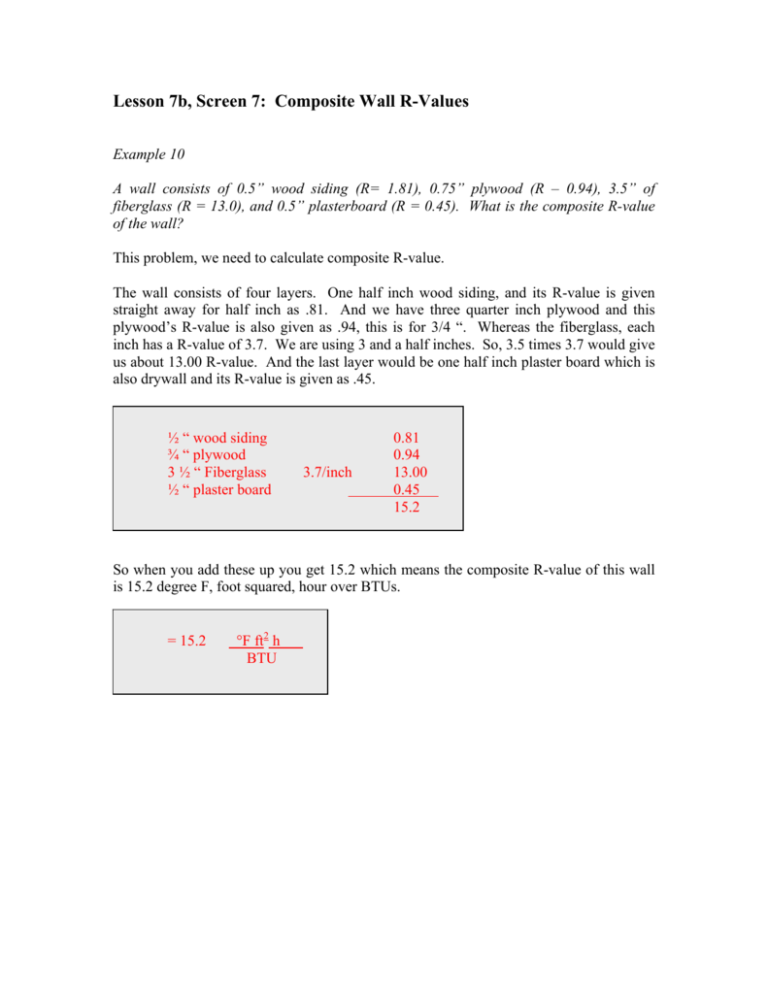
Lesson 7b, Screen 7: Composite Wall R-Values Example 10 A wall consists of 0.5” wood siding (R= 1.81), 0.75” plywood (R – 0.94), 3.5” of fiberglass (R = 13.0), and 0.5” plasterboard (R = 0.45). What is the composite R-value of the wall? This problem, we need to calculate composite R-value. The wall consists of four layers. One half inch wood siding, and its R-value is given straight away for half inch as .81. And we have three quarter inch plywood and this plywood’s R-value is also given as .94, this is for 3/4 “. Whereas the fiberglass, each inch has a R-value of 3.7. We are using 3 and a half inches. So, 3.5 times 3.7 would give us about 13.00 R-value. And the last layer would be one half inch plaster board which is also drywall and its R-value is given as .45. ½ “ wood siding ¾ “ plywood 3 ½ “ Fiberglass ½ “ plaster board 3.7/inch 0.81 0.94 13.00 0.45 15.2 So when you add these up you get 15.2 which means the composite R-value of this wall is 15.2 degree F, foot squared, hour over BTUs. = 15.2 °F ft2 h BTU
